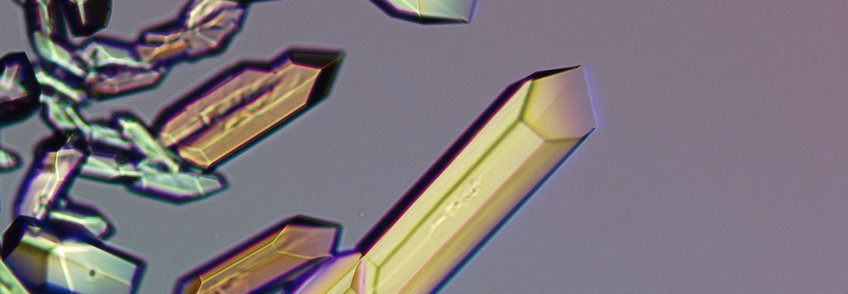Department of Biomolecular Mechanisms
The primary scientific goal of the department is to derive a quantitative description of important biochemical problems at the level of biological systems or model reactions. Based on a common infrastructure, each research group provides a unique methodological expertise that complement each other.
In the general excitement of a time when three-dimensional protein structures of whole genomes are being determined automatically, it is often forgotten that a structure in itself does not tell one how the molecule works or folds. For that, one needs to know a great deal about mechanism, intermediates, structural dynamics and molecular interactions. We gather this information using a wide range of biochemical and biophysical techniques, including molecular biology, transient kinetics and crystallography, mass spectrometry, and computation, to understand how the "jigglings and wigglings of atoms" underlie and contribute to biological function. We study light-induced reactions and those that make use of flavin or heme cofactors, the unique biochemical pathways in anamoxosomes, giant viruses and their virophages as well as their assembly. In addition, we are using X-ray free-electron lasers for structural biology, exploring and further developing their applications.
Departmental Group Leaders
Structural biology, and in particular scattering-based techniques making use of X-rays and electrons, have provided high-resolution insight in the structure and function of molecules, molecular assemblies, and cells. Despite a lot of advances in instrumentation, radiation damage limits high resolution imaging of biological material using conventional X-ray or electron based approaches and can change in particular redox sensitive cofactors, compromising chemical insight in reaction mechanisms. X-ray free-electron lasers (XFELs) exceed the peak brilliance of conventional synchrotrons by almost 10 billion times. They promise to break the nexus between radiation damage, sample size, and resolution by providing extremely intense femtosecond X-ray pulses that pass the sample before the onset of significant radiation damage.
The performance of instrumentation for the precise biochemical characterization of proteins has increased dramitically in recent years, primarily as a result of improvements in computer hardware. This is particularly obvious in the field of mass spectrometry, where newer instruments show increases in resolution and sensitivty of more than 1000-fold over instruments dating from the year 2000, and in robotics, where sophisticated as well as dedicated instruments have become affordable and usable, even for small groups of users.
Research Group Leaders
The discovery of anammox bacteria in the 1990's has dramatically changed our understanding of the global nitrogen cycle. These bacteria perform ANaerobic AMMonium Oxidation (ANAMMOX), combining ammonium with nitrite into molecular dinitrogen (N2) and water, yielding energy for the cell. This process relies on highly unusual intermediates such as hydrazine. We are studying the molecular mechanism of the ANAMMOX process using structural biology.
Bruce Doak and his group invent and develop novel methods of sample delivery for use at advanced X-ray sources, including X-ray Free-Electron Lasers (XFEL) and fourth generation synchrotrons. Based on their research and development, they design and fabricate well-engineered sample injectors for X-ray scattering facilities worldwide.
Sunlight is an important environmental factor and light-induced chemical reactions may have both beneficial and detrimental biological effects. Photon absorption produces highly reactive excited molecules which can undergo chemical changes.
Giant viruses and virophages are two groups of DNA viruses that infect single-celled eukaryotes (protists). Encoding hundreds of proteins and featuring particles that are visible by light microscopy, giant viruses are the largest known viruses. Their enormous coding potential renders them host-independent for many biochemical pathways, such as transcription, glycosylation, DNA replication and repair, and allows certain giant viruses to replicate entirely in the cytoplasm. Virophages are smaller DNA viruses that parasitize upon the enzymatic complexity of giant viruses. In co-infected host populations, the virophage inhibits replication of the giant virus and increases host survival. We are interested in the underlying mechanisms of virophage-virus-host interactions and in the diversity and evolutionary history of these viruses.
Attaining a well-defined three dimensional structure and thus functionality can be a serious challenge in the early life of many proteins. Although the final structure is energetically favored, many side reactions can occur that lead to unproductive protein structures and assembles. This problem is even more challenging for very large assemblies like virus capsids that constitute the protective shell of viruses. Here, not only is the information of the final capsid protein structure encoded in the respective amino acid sequence, but also the supramolecular assembly that contains several hundred copies of this capsid protein and yet forms a precisely defined icosahedral capsid.





